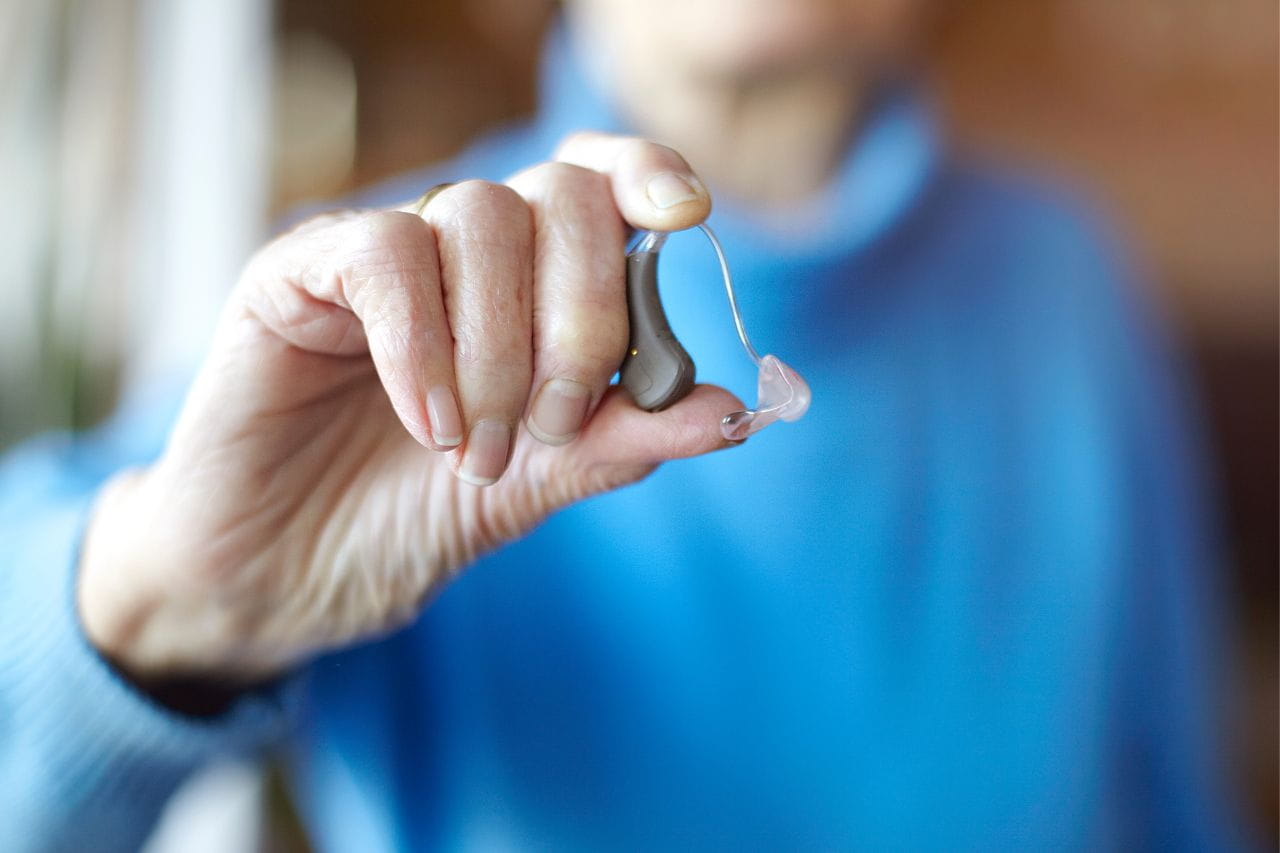Types of Hearing Aids

If you have hearing loss, you’ll be glad to know that there are many types of hearing aids. The right device depends on multiple factors, including the degree of your deficit, your lifestyle, the features you want, and your aesthetic preferences.
An audiologist can help you understand the different types of hearing aids, enabling you to select the type of device that will achieve your desired results.
Hearing Aid Types
What are the types of hearing aids you can use to compensate for hearing loss? The two main categories are in-the-ear and behind-the-ear hearing aids. Within each, there are different styles to consider.
In-the-ear hearing aids
Sometimes called invisible hearing aids, in-the-ear (ITE) hearing aids sit entirely or primarily within the ear canal. Typically, an audiologist takes an impression that’s used to customize the fit.
ITE hearing aids come in different skin tones to match the outer ear and may be designed for positioning deep in the ear canal or closer to its opening. Different ITE hearing aid types include:
Invisible-in-the-canal (IIC) hearing aids
IIC hearing aids are the smallest type and nearly impossible to see. They’re appropriate for people with mild to moderate hearing loss.
Wearers place them very deeply in the ears. To remove them, the person tugs on a pull-out string. Important characteristics of IIC hearing aids include:
- They’re small and discrete.
- They have good sound quality because of their fit.
- They don’t have manual controls like wheels or buttons.
- Their small size means you must replace the batteries more often.
- They’re susceptible to damage from moisture and ear wax.
- They can be more challenging to handle due to their small size.
Completely-in-the-canal (CIC) hearing aids
CIC hearing aids are similar to IIC devices. However, they aren’t designed to sit as deeply in the ear canal. Their advantages and disadvantages are roughly the same as IIC hearing aids and include the following:
- They’re mostly hidden in the ear canal.
- Their sound quality is close behind IIC devices thanks to their relatively snug fit.
- They have no manual controls.
- They have small batteries that require more frequent changes.
- They can be damaged by moisture and ear wax.
- Handling them can be challenging.
In-the-canal (ITC) hearing aids
ITC hearing aids are positioned in the lower part of the outer ear bowl. Their slightly larger size means they have a bigger battery and manual controls. They’re also suitable for a broader range of hearing loss than IIC and CIC hearing aid styles. Other pros and cons include:
- They’re relatively discrete.
- They have a longer battery life.
- They typically have additional features like directional microphones.
- They’re susceptible to moisture and ear wax damage.
- They can make wearers feel like their ears are plugged.
- They’re bigger than other aids but still small enough that they can be difficult for some people to manipulate.
Low-profile hearing aids
These hearing aids can have half-shell or full-shell designs, which describes how much of the outer ear bowl they take up. Like ITC hearing aids, their larger size gives them some advantages. However, they also have some disadvantages.
Considerations include:
- They’re easier to put in and take out.
- They have more features and better user controls.
- They can typically connect wirelessly to devices like phones.
- They’re more noticeable than other styles.
- They can create the sensation of plugged ears.
Behind-the-ear hearing aids
Behind-the-ear (BTE) hearing aids have an insertable ear dome that goes into the ear canal and connects by a thin wire to the main body of the device, which sits behind the ear. BTE hearing aids typically have an above-average sound quality and are available from all major manufacturers.
The two primary types of BTE hearing aids are:
Receiver-in-the-ear hearing aids
Sometimes called receiver-in-the-canal (RIC) devices, receiver-in-the-ear (RITE) hearing aids are among the most popular. They’re very user-friendly, and the speaker portion can typically be repaired or replaced at a hearing aid clinic rather than requiring shipping to the manufacturer.
Advantages and disadvantages of RITE hearing aids include:
- They can connect wirelessly to phones or other devices.
- They often have rechargeable batteries.
- They typically have advanced technology like artificial intelligence (AI)
- They can have telecoils that enable them to couple with telephones and assistive listening devices.
- Their speakers can be damaged by moisture and ear wax.
- The main body of the device is visible behind the ear.
Behind-the-ear-with-earmold hearing aids
These powerful hearing aids can help with any degree of hearing loss, from mild to profound. Their longer design follows the contour behind the outer ear. They’re feature-rich devices often used for children because of their programming capabilities and the ability to replace the earmold as the child grows.
Pros and cons include:
- They can be used by anyone with hearing loss.
- They typically have advanced technology and wireless connectivity.
- The customized earmold fits comfortably.
- They’re less susceptible to damage from moisture or ear wax.
- They may cause the ears-plugged sensation.
- They can pose positioning challenges for people wearing glasses.
- They are more visible than other hearing aid styles.
What Style of Hearing Aid Is Most Effective?
There are many hearing aid options and styles available. It’s essential to consider your needs and preferences carefully before selecting one.
Get Expert Advice from Our Audiology Department
If you have questions about hearing aids, we can help. Contact the Baptist Health Audiology Department.




.png?rev=69f3814f012b4f3198cb9fabadc98e2b)